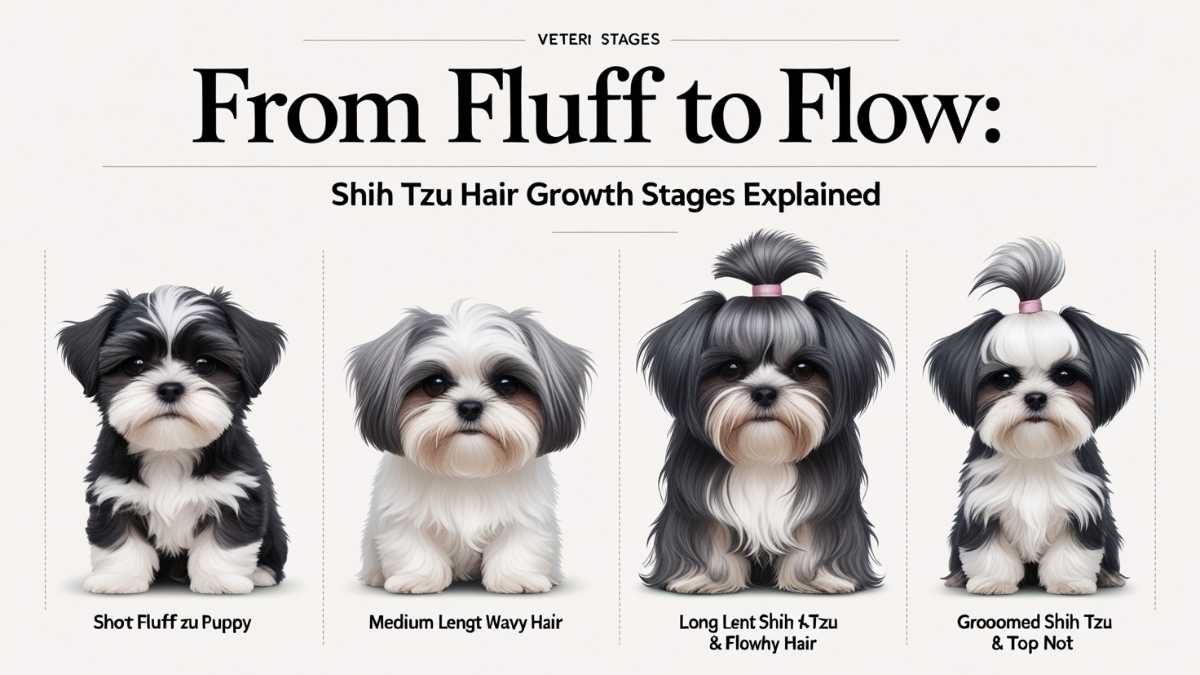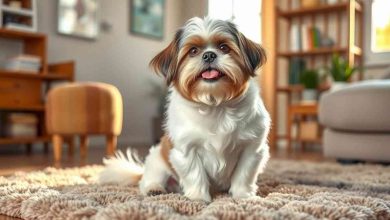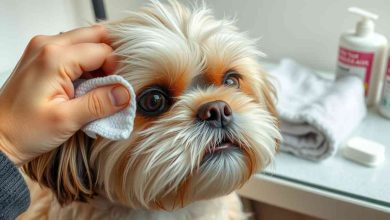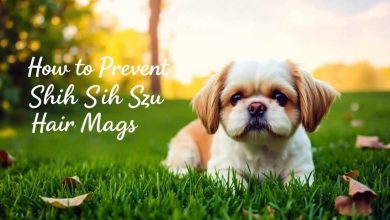From Fluff to Flow: Shih Tzu Hair Growth Stages Explained

A Shih Tzu’s coat isn’t just for looks — it tells a story of growth, care, and transformation. For any Shih Tzu parent, understanding how their pup’s hair changes over time is key to ensuring their health and comfort. Shih Tzus are known for their long, flowing, double coats that require regular attention. But behind that luxurious mane is a clear timeline of growth stages every owner should know.
Understanding the Shih Tzu Coat
Shih Tzus have a unique double-layered coat — a soft undercoat and a longer, often silky outer layer. Unlike many breeds, they don’t shed heavily, which is why they’re often thought of as hypoallergenic. But this doesn’t mean their grooming needs are simple. Their coat grows continuously and can easily mat if not maintained.
Genetics play a big role in how their coat forms. The FGF5 gene influences length, and Shih Tzus typically carry the long-haired version. The RSPO2 gene adds facial features like mustaches and eyebrows, while the KRT71 gene determines curliness. These genetics together give Shih Tzus their iconic look.
Puppy Coat (0 to 12 Months)
In the early weeks, Shih Tzu puppies have soft, plush, and fluffy fur that feels more like fleece than hair. It offers warmth but is very different from the adult coat. This stage lasts until about 10 to 12 months.
Between 4 to 6 months, you may start noticing subtle changes. The hair might begin to grow longer, and you’ll see more tangles forming. This is the beginning of their transition. At this point, brushing becomes more essential — even if you don’t see heavy shedding, mats can form near the ears, neck, or armpits.
A common issue during this time is hair falling into their eyes. Owners often introduce top knots or soft grooming trims to prevent irritation. Keeping the eye area clean is also crucial to avoid staining or infections.
Transition Phase (9 to 14 Months)
This is one of the most demanding grooming periods. Around 9 months, your Shih Tzu begins to shed their puppy coat and develop their adult double coat. This phase is marked by noticeable changes in texture, volume, and density.
You may feel like your Shih Tzu is shedding more than usual — and that’s normal. It’s not traditional shedding, but rather the old hair making way for the new, thicker coat. It’s during this time that many owners consider trimming to make upkeep easier.
Brushes like slicker brushes or pin brushes are useful now. Gentle detangling sprays can help ease the process. Daily brushing is highly recommended to prevent painful mats, especially under the legs, behind the ears, and around the collar.
Adult Coat Stage (After 12 Months)
By the time your Shih Tzu reaches 12 to 18 months, their adult coat is usually fully in place. It’s longer, heavier, and far more high-maintenance than the puppy coat. The hair now grows in a steady cycle, and with proper grooming, it can become floor-length and stunning.
The adult coat requires more than just regular brushing. It needs commitment. Bathing every 2 to 3 weeks using gentle shampoos, applying conditioner to prevent dryness, and trimming the ends regularly are all part of maintaining that luxurious flow.
At this stage, you might choose between a long show coat or a more manageable puppy cut. Both are fine options — it depends on your lifestyle and the time you can dedicate to grooming. The most important part is consistency and care.
What Influences Hair Growth
While genetics are the blueprint, several other factors shape the speed and quality of a Shih Tzu’s coat growth.
Diet and nutrition are top of the list. High-protein foods, omega fatty acids, and vitamins like biotin contribute to a healthier coat. Dogs on well-balanced diets tend to have shinier, stronger hair that grows more predictably.
Hormonal changes can also affect coat health. After spaying or neutering, some owners report changes in hair texture or density. It’s nothing to worry about unless you see patchy hair loss or skin issues.
Stress and environment matter too. Moving to a new home, introducing a new pet, or lack of sleep can slow growth or dull the coat. Just like in humans, a happy, relaxed environment supports better health overall.
Grooming Through Each Stage
How you care for your Shih Tzu at each stage of their hair growth makes a big difference.
In the puppy phase, use soft brushes and keep sessions short and playful. It’s more about building a routine than perfection. A few minutes each day can help them get used to being handled and groomed.
During the transition, detangling becomes a daily task. Be patient and gentle. Pulling on mats can hurt your dog and make them fearful of grooming time. Instead, hold the base of the mat and use a wide-toothed comb or dematting tool slowly.
In adulthood, establish a grooming routine that includes bathing, drying with a low-heat dryer, conditioning, brushing, and trimming. Pay extra attention to friction points: armpits, under the collar, behind the ears, and inner thighs.
Dealing With Common Issues
You may encounter a few bumps along the way. Hair loss or excessive scratching could point to allergies or skin problems. Dull coat? That might be a sign of poor diet or product buildup.
Matting is the number one issue for Shih Tzu owners. Once mats form, they only grow worse without intervention. If mats get too tight or close to the skin, they can cause bruising or harbor bacteria. In severe cases, a professional groomer may need to shave them out.
Trimming and Styling Tips
The first haircut should be a calm and positive experience. Many owners opt for a puppy cut around 4 to 6 months, especially as the coat starts thickening. It’s easier to maintain and helps dogs stay cooler in warmer climates.
When styling, keep the eye area neat and clean. You can use small grooming scissors or electric clippers for a gentle trim. Keep fur around the paws and sanitary areas trimmed regularly for hygiene and comfort.
Top knots are adorable, but they’re also practical. Just make sure not to tie the band too tightly, and switch placement frequently to avoid breakage.
Seasonal and Age-Related Changes
Just like us, dogs experience seasonal shifts. You might notice more shedding or coat dullness during extreme weather changes. Adjust grooming routines accordingly.
As your Shih Tzu ages, their coat might thin or change in texture. This is completely normal. Senior dogs may need less frequent full grooming but more spot maintenance to ensure their comfort.
Conclusion
The journey from fluff to flow is a meaningful one. Every stage of your Shih Tzu’s hair growth requires care, patience, and understanding. Whether you’re brushing out tangles in a playful puppy or maintaining the elegance of a full adult coat, grooming is a time to bond and connect.
By learning these growth stages and responding to your pup’s unique needs, you ensure not just a beautiful coat but a healthy, happy companion.
Because a well-groomed Shih Tzu isn’t just a pretty face — it’s a reflection of the love behind the brush.




